How to Choose the Right Pair of Headphones for You
Choosing headphones? You got this.
Of all the everyday gadgets that impact quality of life, headphones are near or at the top of the list. We run with them on, we take them to bed, we wear them on trains and planes - some of us even eat, drink, and go to sleep under headphones. The point? A good pair improves your quality of life. And a not-so-good pair? Not so much. So stick with us here, and in the next 5-10 minutes we’ll cut through the confusion, help you narrow your choices, and maybe even open your eyes as well as your ears. And if you’re just looking for some of the most commonly asked questions. headphone accessories, or want to skip ahead to see a list of our favorites, go for it — we’ll meet you further down.
Headphone Buying Guide Cheat Sheet
If you’re only going to read one thing, read this.Here are the most important things to ask yourself and know when choosing your next pair of headphones, in bitesize form.
-
How will you be using them? Are you looking for headphones that don’t fall off when you jog? Or headphones that block out the world on a crowded plane? The point: how you plan to use your headphones should influence which type you buy. And there are several types.
-
What type of headphones do you want? On-ear headphones rest on your ears, while over-ear headphones cover your entire ear. And though in-ear headphones aren’t best for pristine audio quality, you can do jumping-jacks in them – and they won’t fall out.
-
Do you want wired or wireless? Wired = a perfect full-strength signal, always, but you remain tethered to your device (your phone, mp3 player, TV, etc.). Wireless = you’re free to move around, even dance with wild abandon to your favorite song, but sometimes the signal isn’t 100%. (Though most wireless headphones do come with a wire, so you get the best of both worlds.)
-
Do you want closed or open? Closed as in closed-back, meaning no holes to the outside world (everything is sealed). Open, as in open-back, with holes and/or perforations to the outside world. Close your eyes, and the former ensures you remain in your own world, with nothing but the music. The latter lets your music out, creating a more natural listening experience (similar to a regular stereo).
-
Choose a trusted brand. We have a rep for testing and vetting brands — we put them all through the wringer.
-
Buy your new headphones from an authorized dealer. And get the manufacturer's warranty, service, and support. (In our case, guaranteed support even long after the sale.)
-
Or just skip the rest of this and buy one listed here: The Best Headphones of 2023. Then give yourself a standing-O. You now have what our experts are calling one of the best pair of headphones anywhere, at any price. Any questions? You’re welcome to call and speak to one of our experts– anytime.
5 Steps to Choosing the Right Headphones
# Step 1. Identify how you will use your headphones.
Will you be using your headphones while traveling, sitting in your listening room, or at the gym? Or maybe all three? Different headphones will be better for different situations — and the rest of this guide will help you identify the right ones for you.
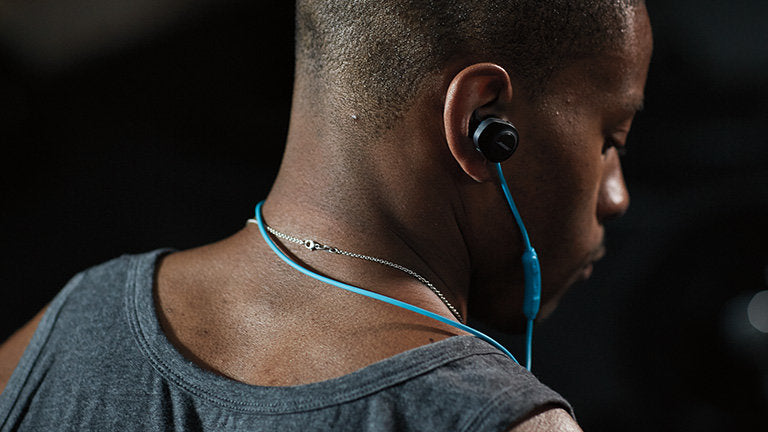
Bose SoundSport Wireless Earbuds
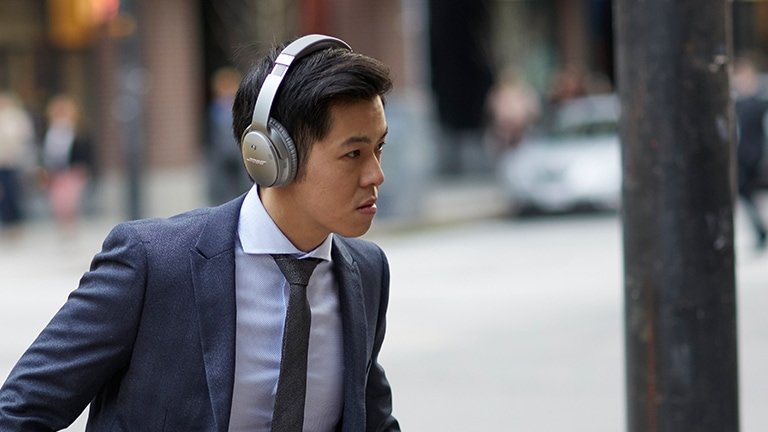 Bose QuietComfort 35 Wireless Noise Cancelling Headphones II
Bose QuietComfort 35 Wireless Noise Cancelling Headphones II
# Step 2: Choose the right headphone type.
The biggest decision of all.
Before we get to wireless variations, noise cancellation, smart features, etc., you need to settle on your preferred headphone type first, so let’s do it. The three basic variations headphones styles are: Over-ear, on-ear, and in-ear.
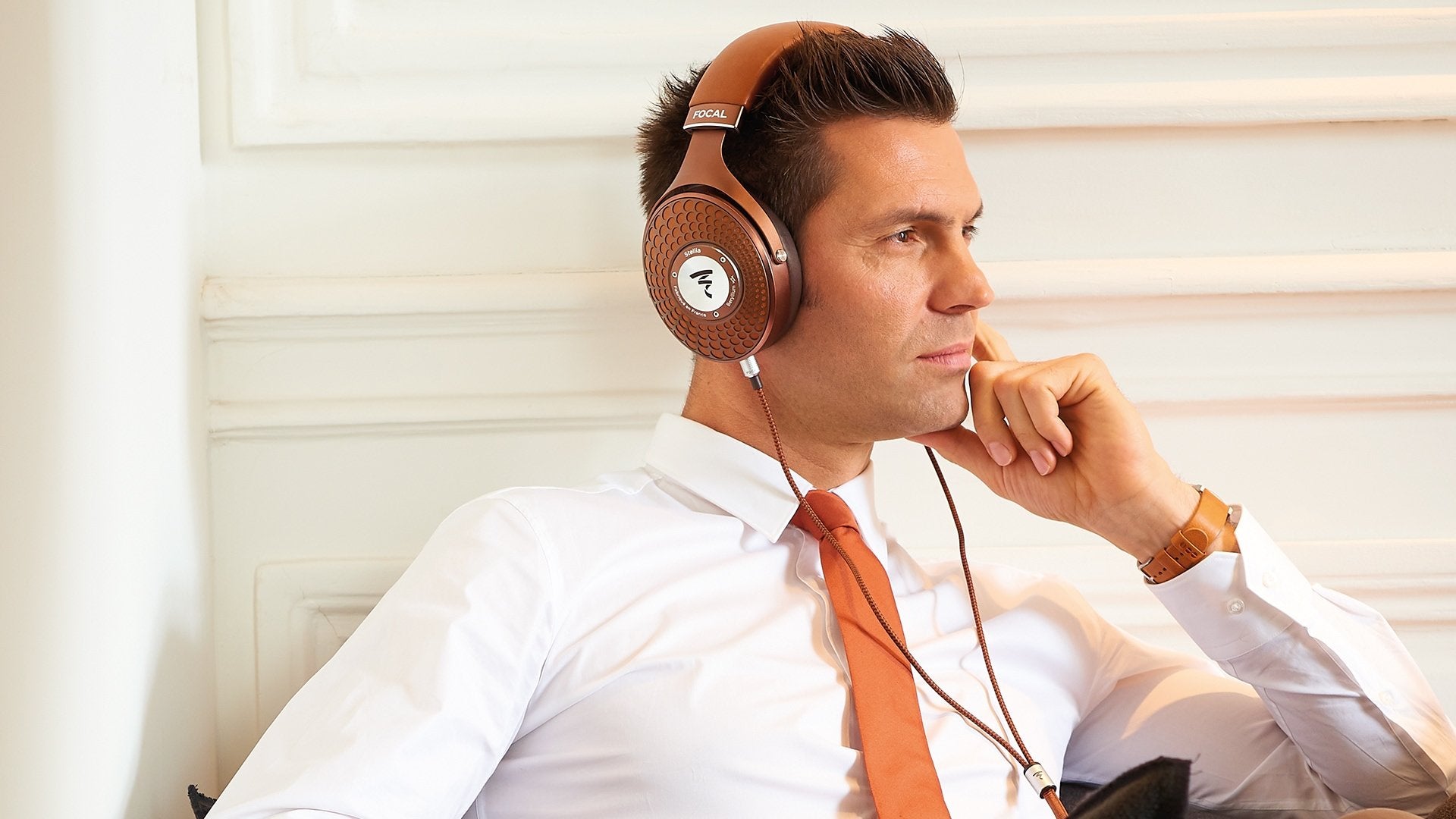
Over-Ear Headphones
The biggest of the three types, over-ear headphones surround or cup your ear and stay on via light pressure on your temple and upper jaw. Over-ear headphones are the classic, original style headphones and they come in two versions: closed and open. Closed-back headphones naturally keep your music in, preventing others around you from hearing what you're listening to, while open-back headphones have openings that let outside sounds in and inside sound out. (The effect here is a more natural, spacious sound, but more on that in a bit.)
The Good
Over-ear headphones are the only type that
leave a space between your ears and the headphone speakers. On a good
pair, that space does what a good concert hall does: envelops you in
sound that is natural, while lending a sense of distance between you and
the performance. So music on a good set of over-ear headphones is
killer, which is why so many sound engineers and music producers prefer
them.
The Not-So-Good
Typical over-ear headphone complaints
include: Too bulky. Too big. Claustrophobic. I can’t hear the doorbell.
“My ears feel like they get hot.” After an hour, I get ear fatigue.
(Whatever that is.) But keep in mind, comfort is a matter of personal
preference. Some of the more premium headphones are built with materials
like lambskin and memory foam to improve comfort.
What else?
If you try to run or work out in over-ear
headphones, they can make your ears sweaty. But if you’re on a 6-hour
flight and you really, really need to block out the world, over-ear is
best — especially with noise-canceling built-in. Lastly, bigger is always better with sound, and bigger over-ear headphones = bigger speakers + bigger (longer) battery life.
P.S. Fit & finish on a high-end pair of over-ear headphones is often gorgeous.

On-Ear Headphones
On-ear headphones are generally smaller and lighter than over-ear headphones, and they stay on your head via pressure directly on your ears, like ear muffs. On-ear headphones also come in open and closed variations, but as a rule, on-ear will let more ambient sound through than over-ear headphones.
The Good
On-ear headphones are the best compromise between
blotting the aural world out while letting some sound in, making it
ideal for the office or your at-home listening room. Many models fold up
into a neat little portable package, and some say on-ear headphones
don’t get hot like over-ear headphones. (Though we think the “hot” issue
is, no pun intended, usually only an issue if you're working out in
them and get overheated. Nothing actually gets hot.)
The Not-So-Good
Typical on-ear headphone complaints: Too
much pressure on the ears hurts after a while. They fall off when I
shake my head. Some ambient sound gets in no matter what. They pinch my
earrings. I miss the deeper bass tones you get with over-ear models.
What else?
Some would argue that a good pair of on-ear headphones (with excellent noise cancellation built-in) is on par with an over-ear equivalent at the same price.

In-Ear Headphones
Often called earbuds or earphones, in-ear headphones are the smallest of the three types and fit in the ear canal. They’re also everywhere these days, thanks in large part to Apple including a pair with every iPhone. (Some are even disposable. And those, we recommend disposing.) There’s a lot to love with in-ear headphones, and a lot to not love, but bottom line: 5 bucks says you have a few in a drawer somewhere and you already know the following.
The Good
In-ear headphones are awesome (cannot-be-beat) for working out or doing anything active since they're more portable and often feature water/sweat-resistant materials. They're convenient, as in stuff them in your pocket or hang them around your neck. Earbuds with noise-cancelation
are also surprisingly good. They don’t muss up your hair or interfere
with your glasses or earrings. And the better ones sound better than you
might think, given their size. (Caveat to follow.)
The Not-So-Good
In-ear headphones tangle easily (unless they come with a tangle-free cord or you go with a pair of truly wireless headphones.) After a while, they can feel intrusive. They’re easy to lose. And the biggie: though we just said “sounds better than you might think,” don’t take that to mean they’re as good as their over or on-ear cousins. Overall aural quality and bass suffers as a result of the small size (again, unless you go for a premium pair of in-ears).
What else?
If you’re buying headphones for working out, you want in-ear headphones. (You can move on to the next section.) Some models come with attachments (sometimes called “fins”) for a more comfortable and more secure custom fit. And some models have ingenious smart and touch features - so you can answer your phone, switch playlists, mute volume, that sort of thing – without fumbling around.
# Step 3: Closed or Open-Back Headphones?
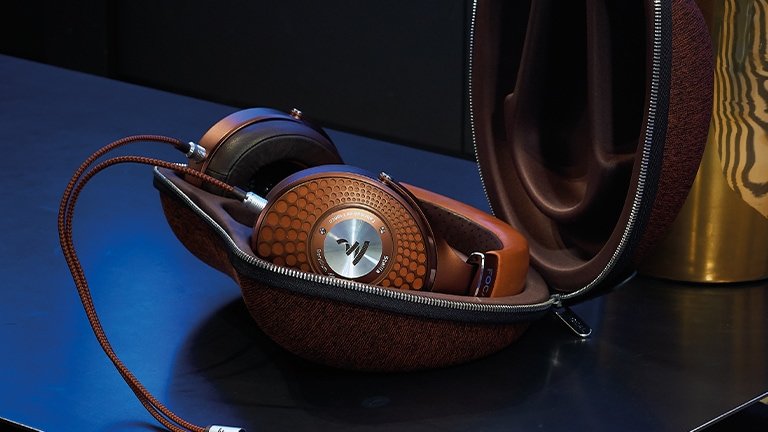
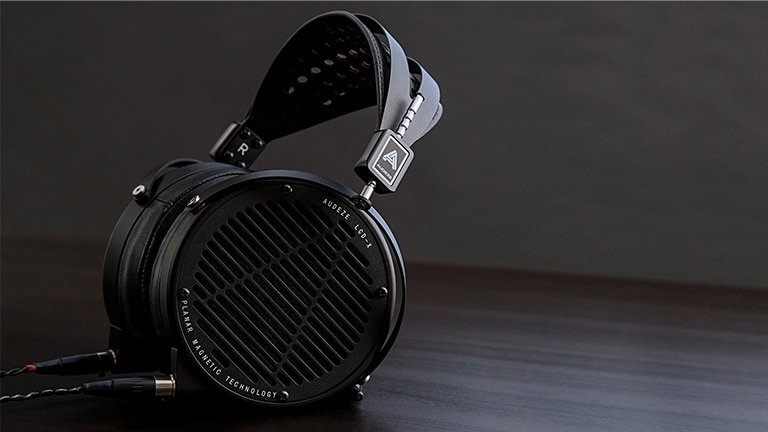
Closed-Back Headphones
Here, the outer casing has no holes or vents and the entire structure is built to cup your ear. (The part that touches your face and seals the space between your ears and the outside world is, of course, a soft, cushiony material of some sort.) And the drivers are seated in the ear cup in a way that sends (or points) all sound solely to your ears. This is the most common design found in all types of headphones (over-ear, on-ear, and in-ear headphones).
The net effect: Close your eyes and you have an orchestra playing live inside your head. Meanwhile, the person next to you hears nothing. (Well, technically, nothing is 100% leakproof when it comes to audio, but you get the idea.) Bottom line: under closed-back headphones, you’re in your own world. Just add noise-canceling tech, and your world will seem far, far away from the real one.
Open-Back Headphones
Open-back headphones. See the vents and holes? With the drivers exposed to the outside world (as opposed to seated in the ear cups), sound gets through and lets air flow in and out of the ear. This creates more spacious sound (or soundstage) and the illusion of a regular stereo. Some say this is a more natural, less contrived way to hear music. And if we stick with our “like listening to an orchestra” analogy, this time you are in the conductor’s seat, on stage among the musicians.
The only caveat: Everyone around you will hear the music you’re listening to as a result, so they’re not ideal for public areas like a plane or train. The best places to listen to open-back headphones: at home or in the office (next to very understanding co-workers, of course.)
So now, hopefully, you know your preferred headphone type, and whether or not you want closed or open backed. So let’s keep going… the good stuff is next.
# Step 4: Wired or wireless?
This one’s easy, but we say it's a matter of personal preference.
First, a quick history: Once upon a time somebody invented Bluetooth, and then somebody else put Bluetooth in a pair of headphones (essentially inventing the world’s first pair of wireless headphones) and though yes, that was clearly a great idea, there was one big problem: music in first generation Bluetooth headphones sounded awful. As in tinny, spotty awful… or AM radio in a bowl of water awful.
That was then. This is now. Today’s premium Bluetooth wireless headphones are so awesome, sound quality is virtually indistinguishable from wired versions of the same thing. And you have two different types to choose from: wireless and truly wireless.
Wireless headphones have a cord connecting the two earbuds, like the Bose SoundSport in ears. With truly wireless headphones like the Bose SoundSport Free, there are no wires for connecting to a music source, and no wires between each earbud (see below).
And we could list the benefits that come with wireless headphones – the sense of freedom, no longer being physically tethered to a device, and so on — but why? This is a no-brainer: If you can afford wireless headphones, buy them. After all, almost every pair of wireless headphones on the market today also ships with a wire, so you still get the best of both worlds.
That said, there are still two big reasons to consider wired headphones. The first: If you’re a serious musician, sound engineer and/or audio tech, you’re going to want wired headphones for the higher quality audio and consistently better sound – no matter the conditions. True for audiophiles as well, and/or anyone who lives for their music.
The second big reason for wired over wireless: battery life. Bluetooth is a steady drain on the battery, and you can never really predict when the battery will run out. (Though you can expect 10 to 20+ hours on most wireless headphones.)
# Step 5: Noise cancelation.
To hear, or not to hear? That is the question.

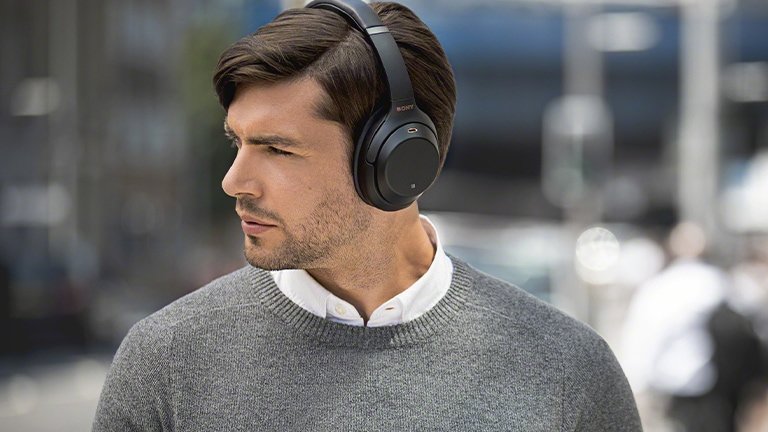
Quick recap.
Ideally, at this point, you’ve picked your headphone style: Over-Ear, On-Ear or In-Ear. Then you chose either the open back or closed back design. Next, you weighed the benefits of wireless and noise-canceling technologies. Now, it’s on to the little – but still valuable – extras.
Back in 1978, an up and coming company called Bose became NASA-like, throwing its considerable talents against a sophisticated noise-canceling technology that would take 11 years to perfect in their headphones. Today, that technology is only better, and in fact, Sony’s own version is so otherworldly good, you’d think they’re using witchcraft or magic somehow.
The real story here: there are two different types of noise cancelation headphone technology, and both work to eliminate the noise around you (like the annoying barking dog next door or the kids watching cartoons) so you can focus on your music. “Active noise-canceling,” is a new methodology where unwanted sounds are eliminated via new sounds created and tailored to cancel them out. “Passive noise-reduction” is less expensive, needs no power, and uses insulating techniques to prevent unwanted noise.
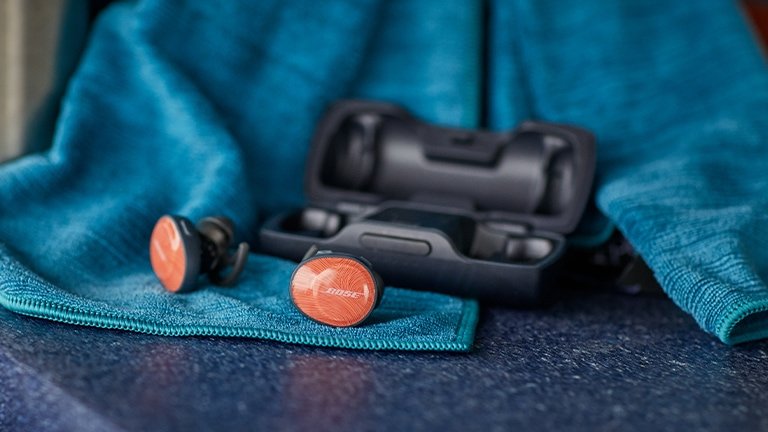

Comments
Post a Comment